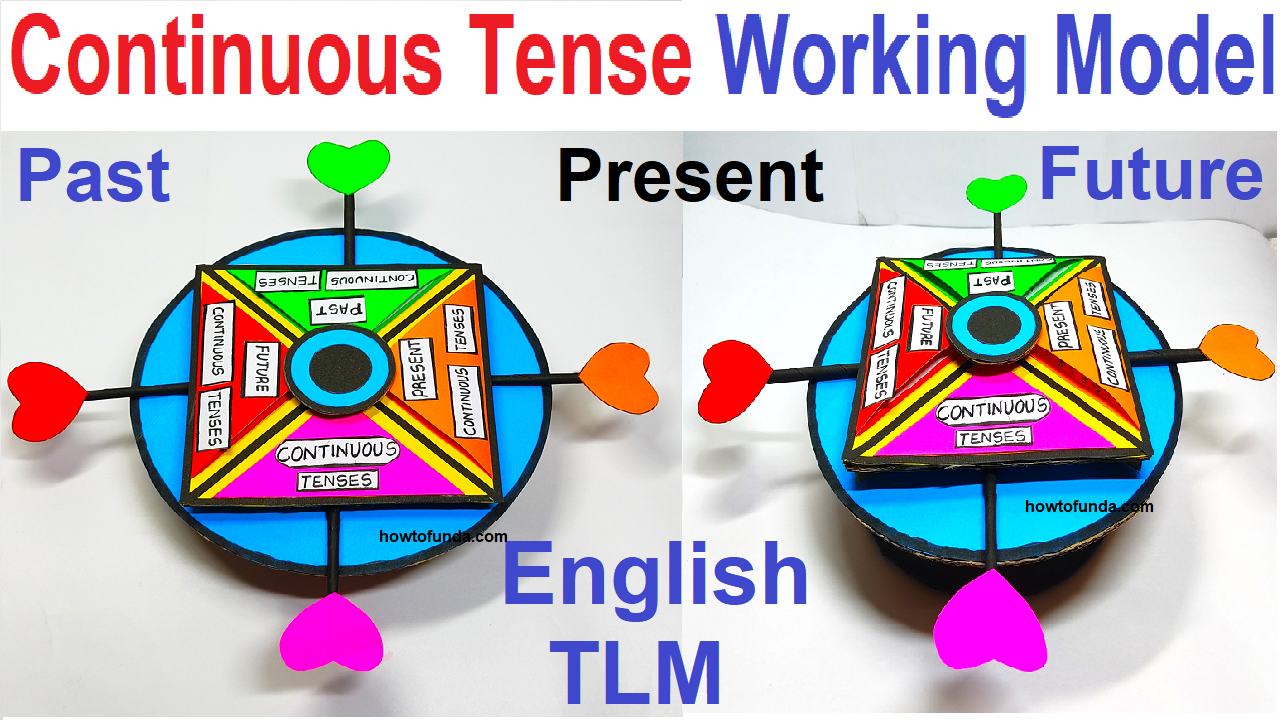Creating a teaching-learning material (TLM) working model for continuous tense (present, past, and future) can be an engaging way to illustrate the usage of continuous tenses in English grammar.

Here’s a step-by-step guide to making a simple yet effective TLM working model:
Materials Needed:
- Cardboard or foam board (for the base)
- Colored paper (for decorating and labeling)
- Markers or pens (for writing and labeling)
- Scissors
- Glue or adhesive
- Small images or icons to represent actions or events (optional)
Step by Step Video Instructions continuous tense working model:
- Prepare the Base:
- Cut out a large piece of cardboard or foam board to serve as the base of your TLM working model. This will provide stability and support for the components.
- Create Four Sections:
- Divide the base into four sections to represent the continuous tenses: Present Continuous, Past Continuous, and Future Continuous. You can use colored paper or markers to create borders or labels for each section.
- Make Sliders for Continuous Action:
- Cut out three triangle from cardboard to serve as sliders for each tense.
- Divide each slider into sections to represent different forms of the continuous tense (e.g., affirmative, negative, interrogative).
- Decorate each slider with colored paper or markers to indicate the tense and its forms.
- Label the Sections:
- Use markers or printed labels to label each section of the sliders with the tense and form it represents (e.g., Present Continuous Affirmative, Past Continuous Negative, Future Continuous Interrogative).
- Add Example Sentences:
- Write example sentences for each form of the continuous tense on small pieces of colored paper. Place these sentences in the corresponding sections of each slider.
- Use clear and concise sentences that demonstrate the usage and meaning of each continuous tense
- Decorate the Base:
- Decorate the base of your TLM working model with colored paper or markers to make it visually appealing. You can use different colors or patterns to represent each continuous tense.
- Assemble and Test:
- Once all components are in place, assemble the TLM working model on the base. Make sure that the sliders move smoothly and that the example sentences are visible and easily accessible.
- Educational Demonstration:
- Use your TLM working model for continuous tenses as a teaching tool to demonstrate the concept of continuous tenses to students.
- Slide each section to reveal the example sentences for each tense and explain how they are used in sentences.
- Encourage students to interact with the model by reading the example sentences and identifying the tense and form of the continuous tense used in each sentence.

